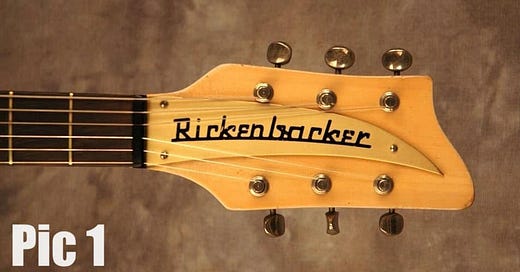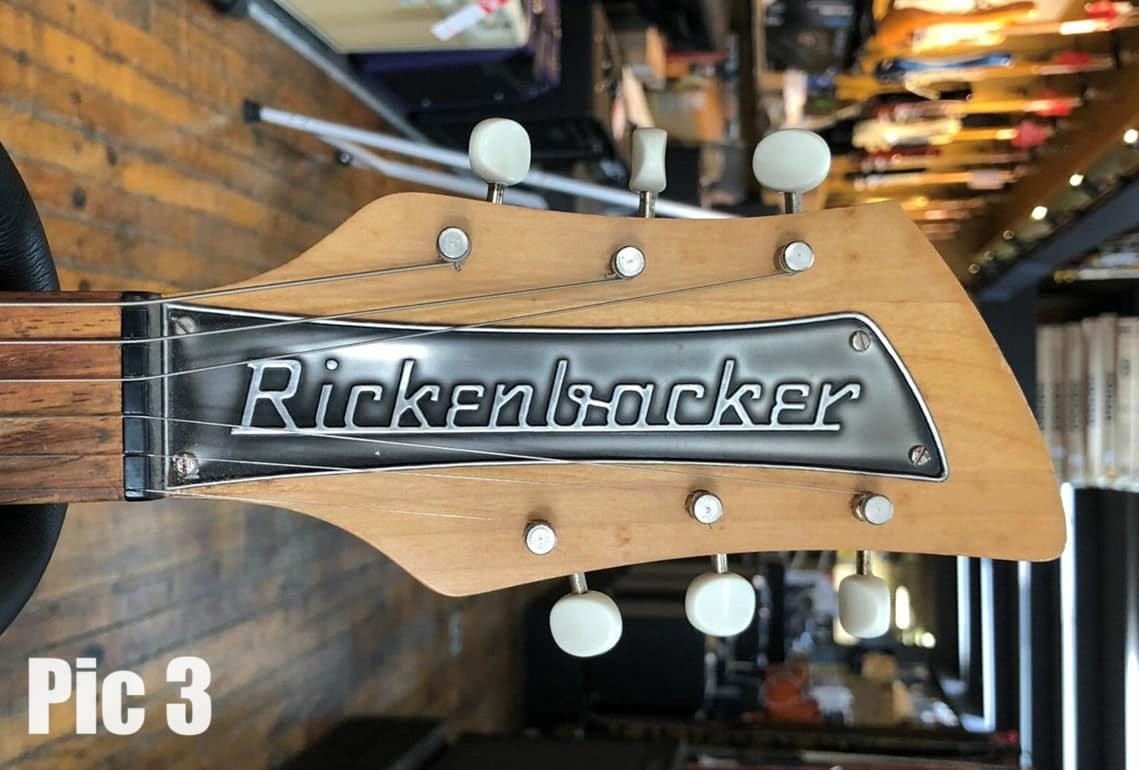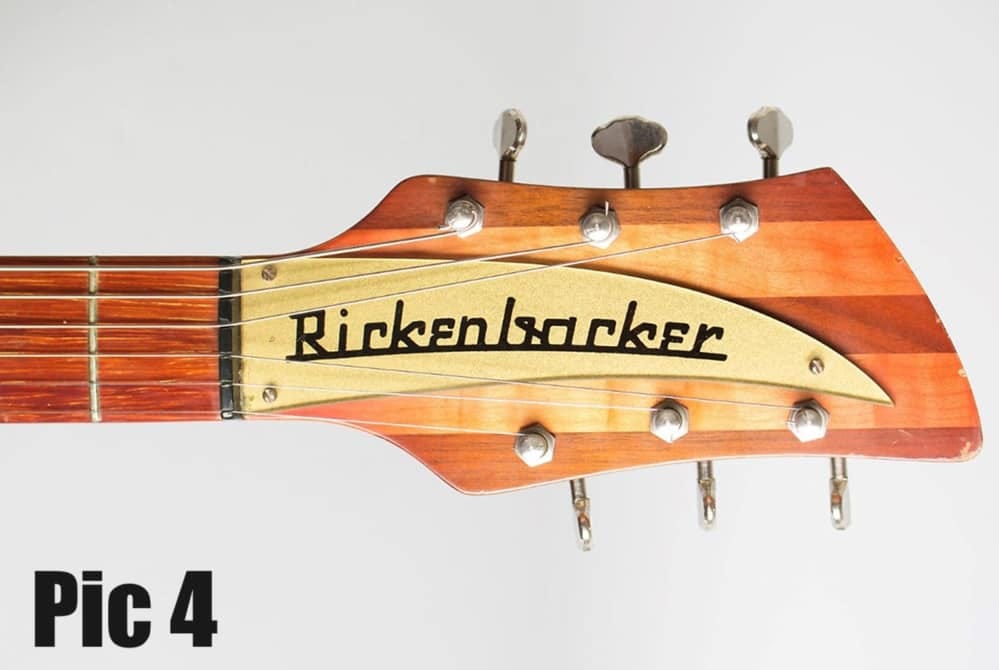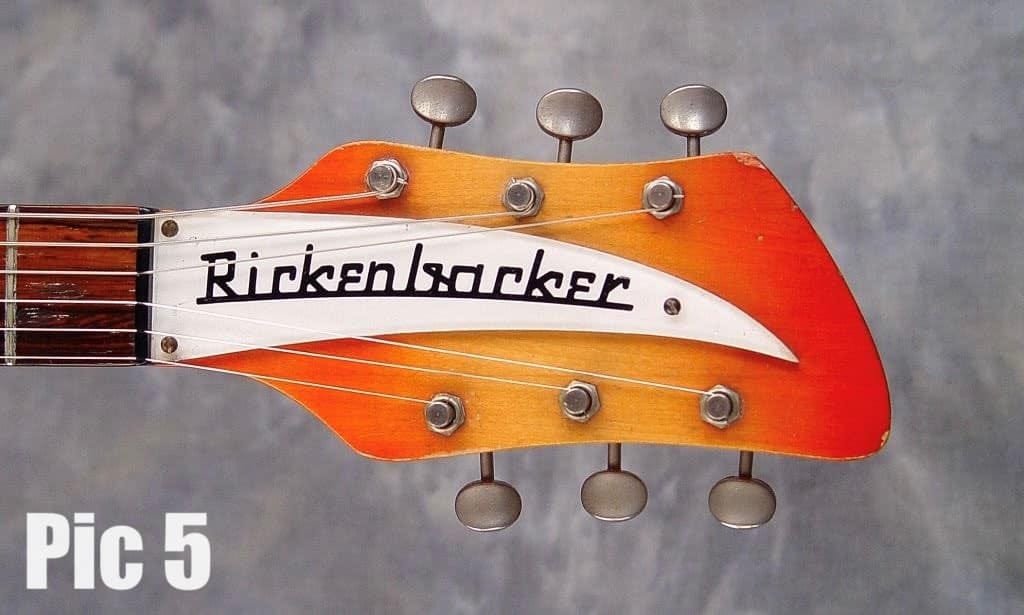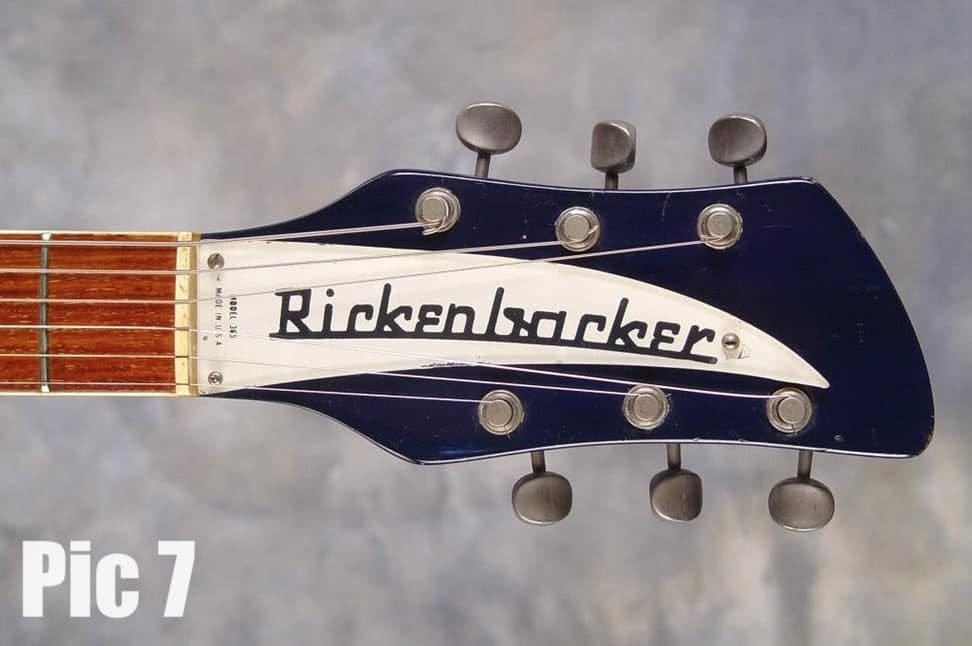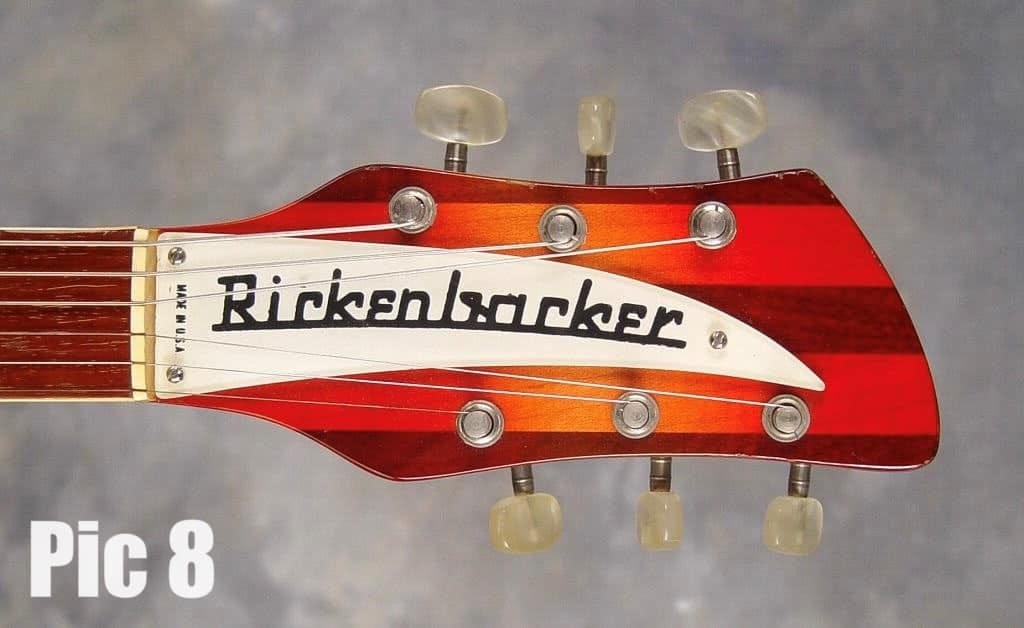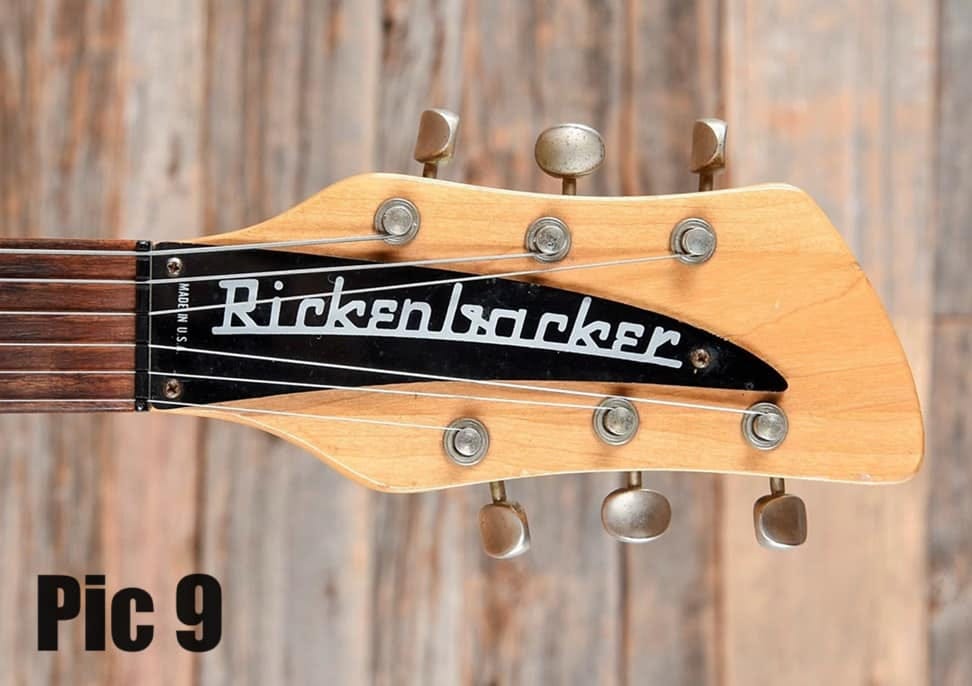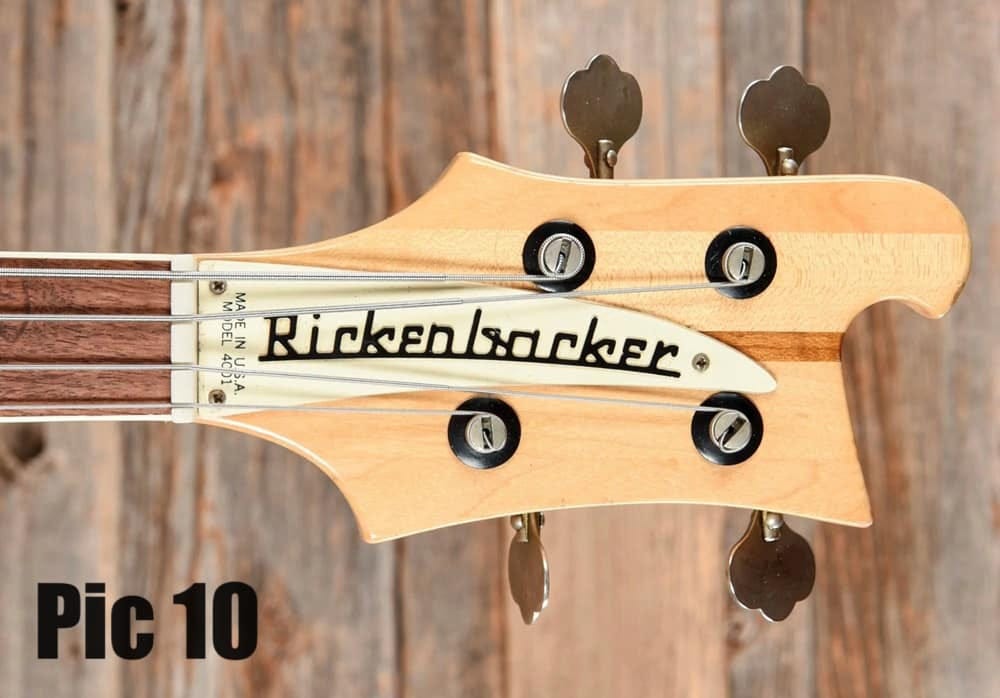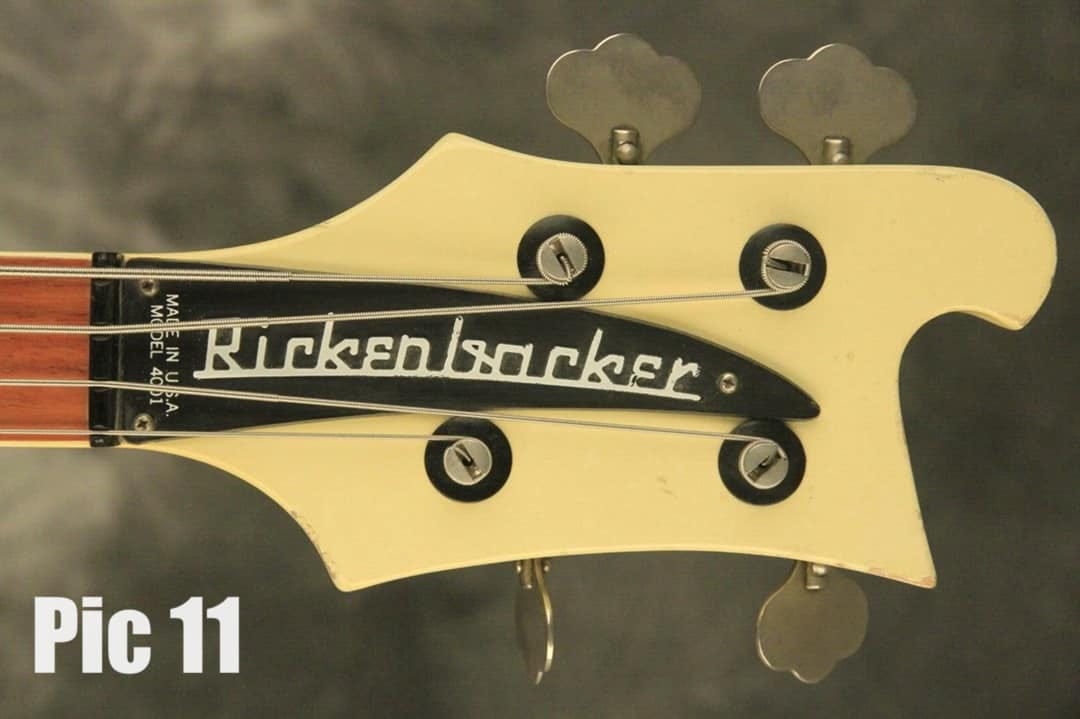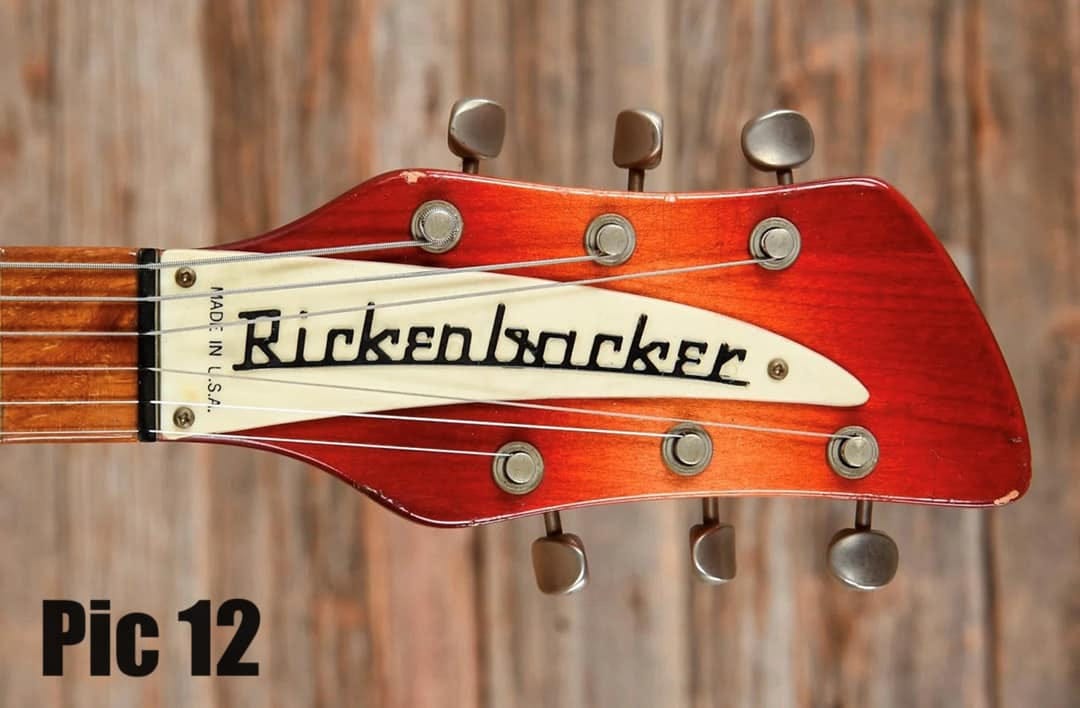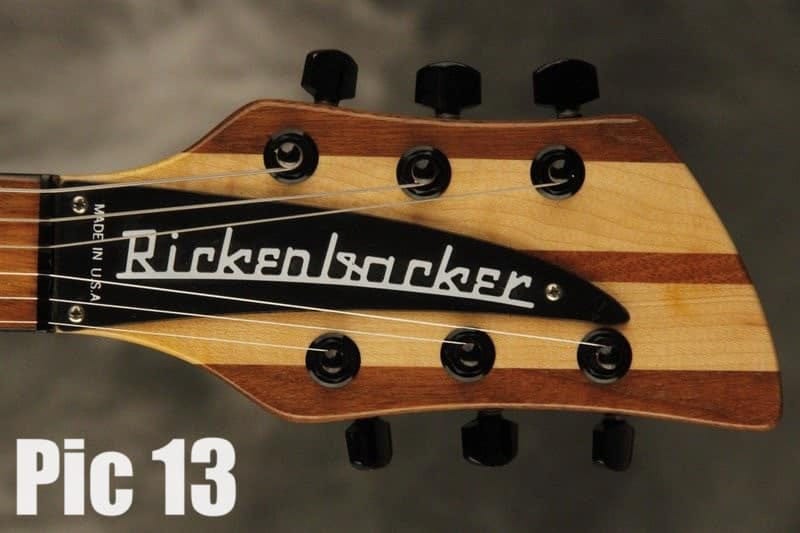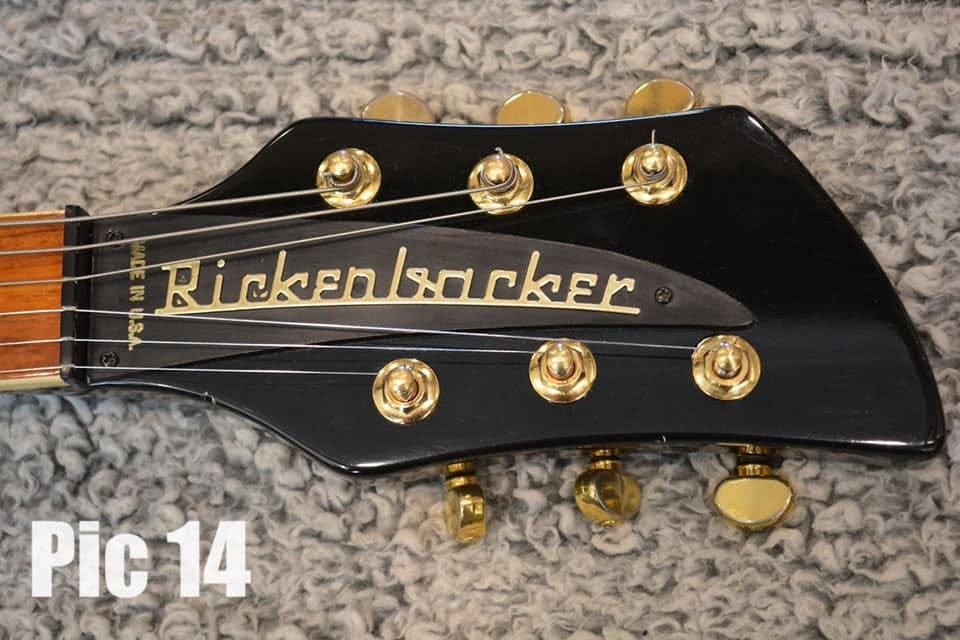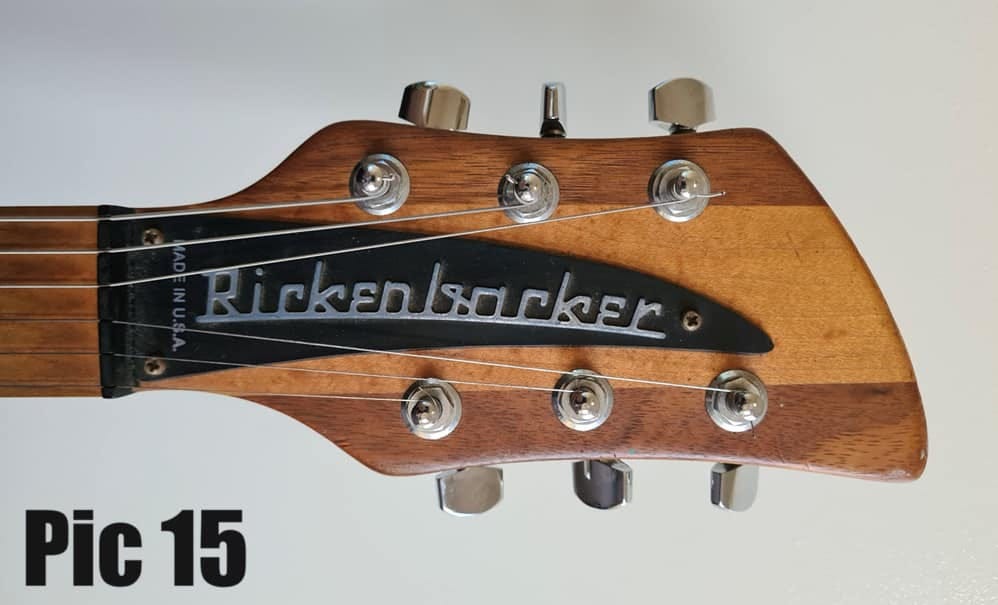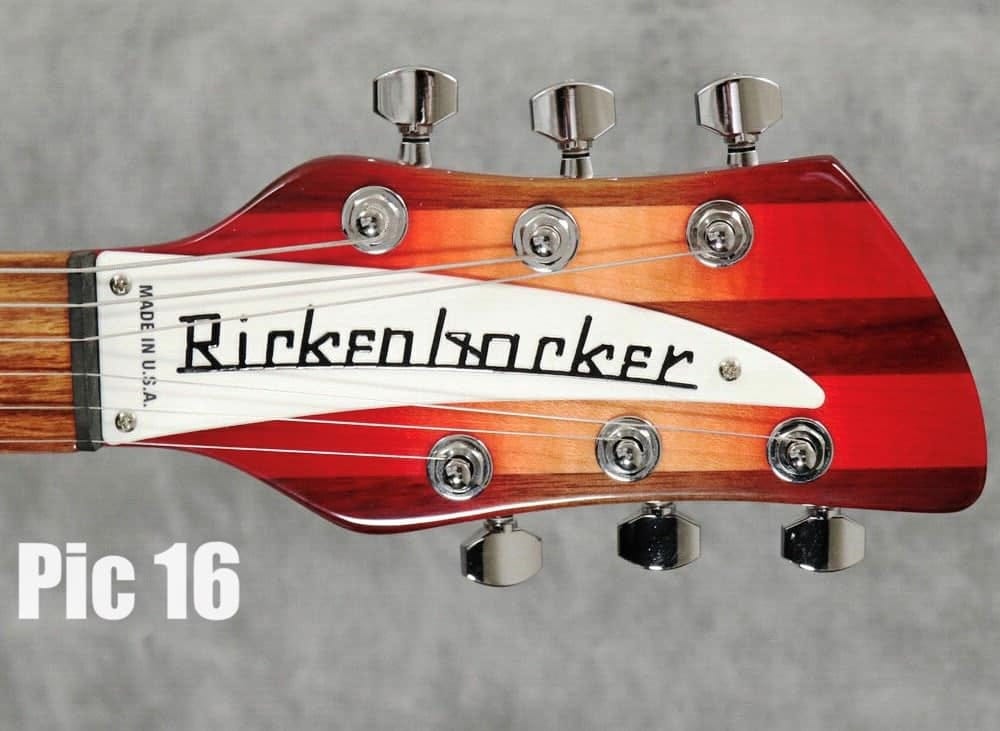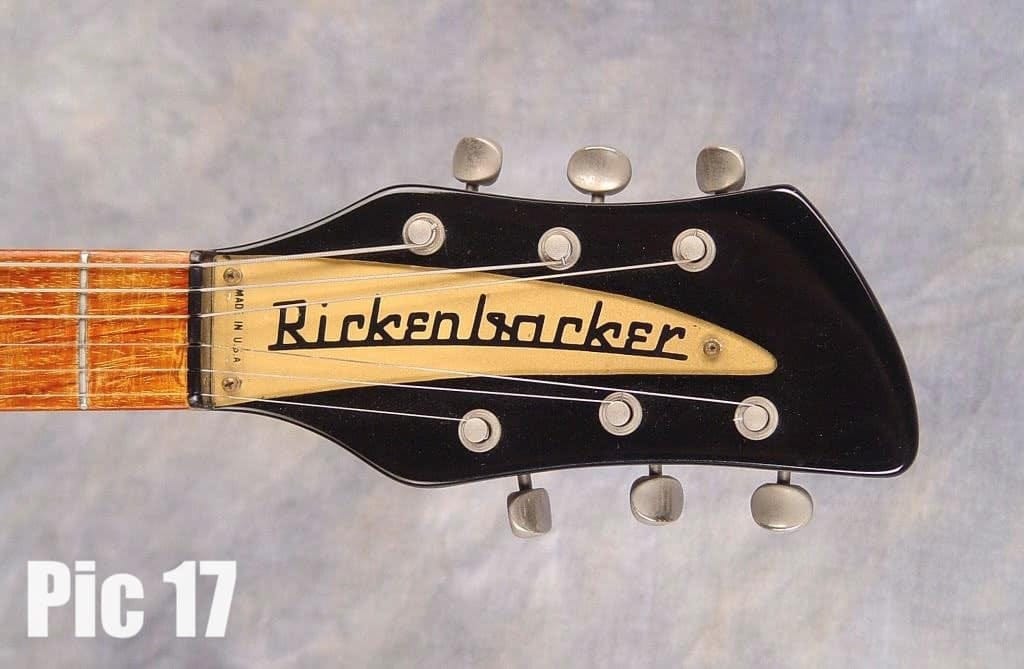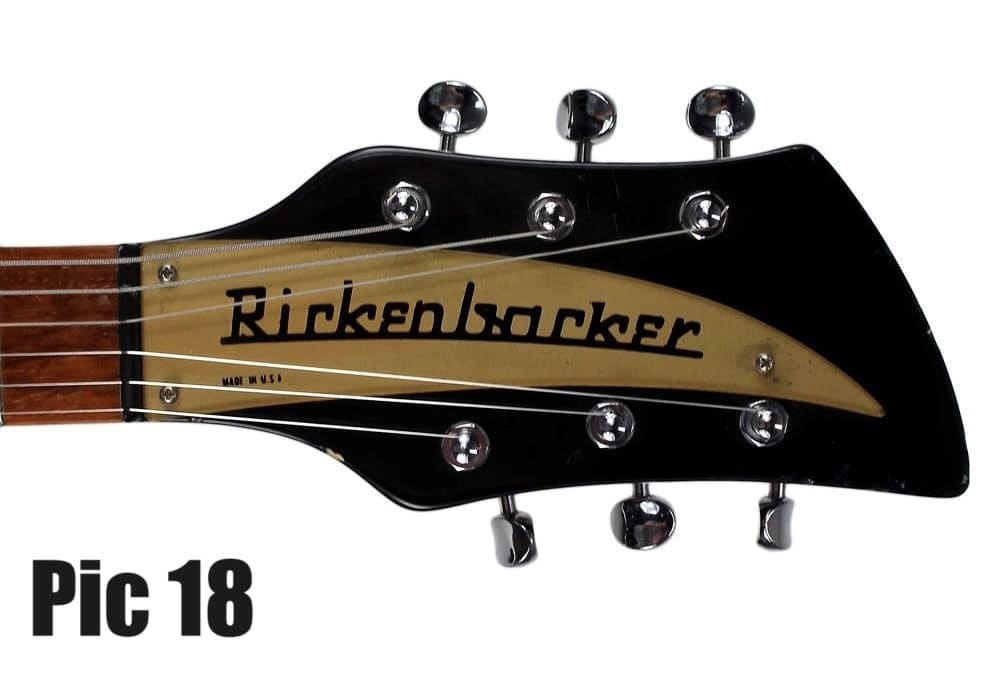Standard Truss Rod Covers
Let’s talk about truss rod covers! But not ALL of them—that would take forever! No, we’re gonna break this into three parts: “standard” truss rod covers—which we’ll cover today— “special” truss rod covers, and left handed truss rod covers. We’ll come back to those two later. So what do I mean by “standard”? Just exactly that: if you ordered a stock guitar out of the catalog with no special instructions, this is how it came. “Special” is exactly that: signature models, special color runs, private label models, special runs for a specific dealer, anniversary guitars like the 75th anniversary models, etc. These were factory applied truss rod covers, but they never appeared on a “stock/catalog” guitar. Clear?
And let me quickly say there is NO way for me to be 100% complete and correct on this one. I’m not gonna give model-by-model measurements and screw details—we’re not gonna go THAT deep. But we’re gonna go deep enough that YOU can eyeball a truss rod cover and narrow down the date range. I will do my best, but I promise you I’ll get something wrong. I will miss a weird one. Tell me, and I’ll fix it. And I should also point out that a very large number of the illustrative pics attached come from the collection and lens of Ron O'Keefe. His documentation of the many guitars that have passed through his hands is invaluable to efforts like this, so many thanks to Ron! OK, let’s go!
So the beloved crescent/shark tooth/whatever-you-want-to-call it truss rod cover shape we all know and love today was designed by Mama Hall herself and first appeared in 1954 on the first “modern” Rickenbacker electric guitars, the Combos 600 and 800. John Hall has said it was inspired by/a variation of the cats eye soundhole, but given that it predates that particular design feature by a couple years it’s likely a case of an incorrect memory or more likely a little retconning. He goes on to say the designer of the logo/lettering has been lost to time, but that it is hand lettered—so you won’t find the font anywhere. If you’re like me, you’ve likely tried! Shown in Pic 1 below, these first of the breed were gold anodized with a black painted “Rickenbacker”.
The first variant came that very same year. Truth be told, those first 800s/600s had both gold and black plastics, with black pickguards receiving matching TRCs—with what appears to be the same anodized base painted black with Rickenbacker printed in white (Pic 2 below).
Launched in 1957, the first few student model 1000s would wear this black TRC, but this was shortly replaced by a completely new design for student/entry level solidbody guitars: the “aluminum foil” truss rod cover (Pic 3 below).
While not ACTUALLY made of aluminum foil, it was made of a relatively thin stamped metal with a gray/black wash over a unique-to-this-design shape. The 900/950 would launch with the stamped metal TRC, as would the cresting wave 425/450s that debuted in 1958. The stamped metal TRC would phase out on student/entry guitars level over the course of 1961, to be replaced by the TRC introduced on…
The semi-hollowbody Capris launched in 1958, which got their own, new gold TRC (Pic 4).
No longer anodized, the new version was made of clear lucite, with “Rickenbacker” screenprinted on the back and then painted over in metallic gold. This was the beginning of the “plexi” truss rod cover era.
The “New Capri” semihollow models launched in 1962 retained the gold plexi TRC as did the F Series guitars, but by March of that year all solidbody guitars were wearing a new TRC: the white plexi (Pic 5).
As you can see, the white plexi TRC was identical to the gold plexi except it was back-painted white instead of metallic gold. While this design would be tweaked slightly over the years, the same basic design would last until the beginning of the injection molded era in 1976.
While most of the semihollow guitars built in 1963—including the Suzi Arden 360/12—wore a gold plexi TRC, semihollow guitars built in December—including the George Harrison 360/12—wore the white plexi that had appeared on the solidbody guitars the year before. The gold plexi TRC would not reappear until the reissue models.
A brief note about 12 string truss rod covers. These guys vary wildly in terms of the way they are sized or shaped to provide access to the slots. Collin Whitley can tell you ALL about it, but here’s the important thing to take away in THIS post’s context: while the shape and size may vary, the actual color/logo/MADE IN USA is consistent with what you find here for that time period.
The first change to the white plexi TRC came in 1964 (although a handful of these TRC’s appear to have been applied to late 63 production) at British distributor Rose Morris’s request: “MADE IN U.S.A.” was printed in small print below and parallel to the Rickenbacker logo, beginning very close to the bottom screw (Pic 6).
While initially applied to only the Rose Morris guitars, by the end of 1964 all guitars wore the small “MADE IN U.S.A” white plexi TRC.
There would be no changes until mid/late 1968, when the first of the “model number” white plexi TRCs would appear—but only in small numbers and only on the 6 string 330, 335, 360, and 365 and the 12-string 366 (that’s all I can find, anyway). On this cover, the “MADE IN THE U.S.A” would move from being below and parallel to the logo to being perpendicular to the logo above the nut, with the “MODEL XXX” printed above “MADE IN THE U.S.A.” (Pic 7).
Not all examples of the models listed above feature this TRC, and by early 1969 they had disappeared.
Also in mid/late 1968, the first of the perpendicular/no model number white plexi TRCs would appear (Pic 8).
They are similar to the model number version, but obviously without a model number above “MADE IN U.S.A”. By mid/late 1969 they would completely replace the parallel “MADE IN THE U.S.A.” version. This would be the primary TRC used until 1976.
Remember how I said the model number white plexi TRCs would be back? So they were in 1971! Only this time it was only the 330, 360, and 4001—the “high volume runners”—thusly equipped. The 480 would join the club in 1972. All other models got the perpendicular/no model number white plexi TRC—although the handful of 483’s that were made wear 480 TRCs.
A quick note here: just because your 330/360/480/4001 from this era DOESN’T have a model number TRC doesn’t mean it’s not original. They appear to have gone in and out of stock during their run, and if the parts bin was empty at the time, they just grabbed a “no model number” TRC and slapped it on. So while HAVING a model number TRC can be an “inclusionary” detail to help date your guitar, the lack of one is not necessarily “exclusionary”.
The launch of the short-lived in 430 in 1975 brought a new truss rod cover: a black back-painted plexi TRC with the logo and “MADE IN U.S.A” in white and in the same places as on the white version (Pic 9).
When black trim 4001’s appeared for the first time that same year, they wore this same black back-painted plexi TRC—without the model number that appeared on white trim 4001s made at the same time. It also appeared on the 3000 series basses launched in 1975, and even some 420/450’s were built with black plastics including this TRC.
The biggest change in over 10 years appeared in January 1976: the raised letter injection molded truss rod cover in both white and black. These were made of an injection molded thermoplastic with the letters of the logo raised and painted, black for the white cover and white for the black cover. At launch almost all models had “MADE IN U.S.A.” AND “MODEL XXX”—in black (Pic 10) or white (Pic 11) as appropriate—stamped perpendicular to the logo—but in a different, larger font than found on the plexi TRCs AND in a different order: MADE IN U.S.A. over MODEL XXX, reversed versus the plexi model number TRC’s MODEL XXX over MADE IN U.S.A.
The most notable exception to this Model Number rule is 12 string guitars, none of which ever received a model number on the TRC. These guitars featured a stamped “MADE IN U.S.A.” and a blank space where the model number appeared on other models (Pic 12 white, Pic 13 black).
3 pickup 340/370s are sometimes found with their 2 pickup “donor” 330/360 TRCs, but usually without any model number. All that said, by early 1976 all guitars were wearing some version of the raised letter molded TRC and plexi was no more.
One important thing to remember is never say never during the model number raised letter era. In general, the closer we are to the start of this era the more likely the guitar will have a model number on the TRC, and the closer we are to the end the less likely. But at any point during this era, if they didn’t have the right one handy during final assembly they’d grab a blank one—or sometimes the wrong one. The presence of the model number on the TRC means it’s PROBABLY original, the lack means…your guess is as good as mine?
The end of the model number raised letter era coincides roughly with the introduction of the “paddle headstock” in late 1984/early 1985. The 4003 had lost its number for good by early 1984, and other models slowly followed. By the middle of 1985 the “no model” raised letter TRC—in both white and black as appropriate—was the only one in use on “core” guitars.
What do I mean by “core” guitars? This is totally my classification, by the way. From the 70’s on there have been three basic families of guitars by my reckoning: the tried and true “core” designs like the 330/360/620/4003 that feature era specific details, the “modern” designs like the 480/430/3000 Series/200 & 2000 Series/650/4004 (none of which, you’ll notice, remain in the line today), and the “vintage/reissue” models that harken back to specific vintage guitars of the 50s and 60s like the B/C/V series guitars. We’ll get to that last category in a minute, but first let’s talk about the “modern” guitars.
Until the mid 80’s, “modern” guitars wore the same TRC as their core stablemates. The 250, launched in in 1984, got its own new no model/raised letter TRC: black plastic with gold painted/stamped letters to match the gold hardware (Pic 14).
From that point on, all “modern” guitars with gold hardware would get this TRC. When the 650 appeared in 1992, the chrome hardware guitars in the line would get a new black plastic with silver painted/stamped letters to match their hardware (Pic 15).
From that point on, all modern guitars would get a black TRC with gold or silver letters to match their hardware—until the last 4004 came off the line circa 2016.
There’s only been one notable tweak to the white no-model raised letter TRC since its launch in 1976: in late 2012 the “MADE IN U.S.A” font was changed and made slightly narrower and squarer (Pic 16).
It’s a slight change, but once you see it, you can’t unsee it. This truss rod cover remains the standard production for all core guitars.
We are now done with both “modern” and “core” truss rod covers! Let’s move on to our final chapter for today: the “vintage/reissue” models!
While plexi TRC’s had vanished in 1976, they came back with the launch of the B-Series guitars in 1982. These guitars were the company’s first attempt to build “vintage spec” or “reissue” guitars. But it is fair to say that the B-Series guitars were more “inspired by” Beatles guitars than faithful reproductions in many ways—including the truss rod covers. The 360/12 and 4001 wore white perpendicular “MADE IN U.S.A.” TRCs identical to the 68-75 version, whereas George’s original 360/12 had a no “MADE IN U.S.A.” white plexi TRC and Paul’s original 4001 had the parallel “MADE IN U.S.A.” white plexi. The 320 had the same perpendicular “MADE IN U.S.A.”, but in gold, something that had never existed before that point (Pic 17). Regardless, plexi was back!
The B-Series were short lived, disappearing by the end of 1984. The V-Series guitars first appeared in 1985, and they got closer to correct. The 360/12V64 was still wrong, but in a different way: this time with the 64-69 parallel “MADE IN U.S.A.” white plexi instead of the correct 62-64 no “MADE IN U.S.A.” white plexi. The same correctly appeared on the 4001V63 and 325V63. The 325V59 got a gold version of the parallel “MADE IN U.S.A.” plexi—the second 320/325 reissue to get a TRC that never existed before (Pic 18). 2 for 4 is better than 0 for 3, though!
From that point on, all newly introduced V or C series instruments have come equipped with the parallel “MADE IN U.S.A.” plexi in white or gold with two notable exceptions: they finally got the 360/12 “right” with the 360/12C63, equipped with a no “MADE IN U.S.A.” white plexi, and the 325V58 got the correct no “MADE IN U.S.A.” gold plexi.
There is one guitar out there that deserves mention: the 660. Neither truly “core” or “vintage/reissue”, it comes equipped with the parallel “MADE IN U.S.A.” gold plexi that first appeared on the 325V59.
I think that covers ALL the core/modern/vintage-reissue truss rods we’ve seen to date. That’s a lot! Again, point out anything wrong you spot and I’ll fix it. And when I get my strength back up we’ll move on to the special truss rod covers!


